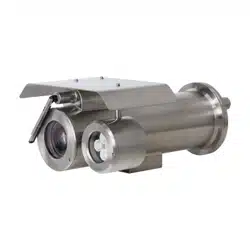Loading ...
Loading ...
Loading ...

139
moving distance should be larger its width and no less than 15 pixels (CIF image) at the same
time.
●
Reduce the complexity of surveillance scene as much as you can. Intelligent analysis functions
are not recommended to be used in scene with dense targets and frequent illumination change.
●
Avoid areas such as glass, reflective ground, water surface, and areas interfered by branch,
shadow and mosquito. Avoid backlight scene and direct light.
8.2.2.1 Global Configuration
Set global rules for IVS, including calibration drawing, calibration verification and sensitivity.
Background Information
Determine corresponding relationship between 2D image captured by the camera and 3D actual
object according to one horizontal ruler and three vertical rulers calibrated by the user and the
corresponding actual distance. Here are the applicable scenes.
●
Medium or distant view with installation height of more than three meters. Scenes with parallel
view or ceiling-mounted are not supported.
●
Calibrate horizontal plane, not vertical walls or sloping surfaces.
●
This function is not applicable to scenes with distorted view, such as the distorted views captured
by super wide-angle camera.
Pay attention to the following points.
●
Calibration Drawing
◇
Calibration area: The calibration area drawn should be on one horizontal plane.
◇
Vertical ruler: The bottom of three vertical rulers should be on the same horizontal plane.
Select three reference objects with fixed height in triangular distribution as vertical rulers,
such as vehicle parked at roadside or road lamp poles. Arrange three persons to draw at each
of the three positions in the monitoring scene.
◇
Horizontal ruler: Select reference object with known length on the ground, such as sign on
the road, or use a tape to measure the actual length.
●
Calibration Verification
After setting the ruler, draw a straight line on the image, check the estimated value of the straight
line, and then compare this value with the value measured in the actual scene to verify
calibration accuracy. In case of major difference between the estimated value and the actual one,
fine-tune or reset parameters until the error requirement is met.
Procedure
Step 1 Click
AI
>
AI Config
>
Smart Plan
.
Step 2 Click
Rule Config
, and then select
IVS
.
Step 3 Click
Global Config
.
Step 4 Configure calibration area and rulers on the left screen.
1) Click and draw a calibration area in the image, and right-click to finish the drawing.
2) Click the ruler icon to draw one horizontal ruler and three vertical rulers in the
calibration area.
●
indicates vertical ruler, and indicates horizontal ruler.
●
Select an added ruler, and click to delete the ruler.
3) Configure the actual length.
Step 5 Configure parameters for the IVS of global configuration.
Loading ...
Loading ...
Loading ...
